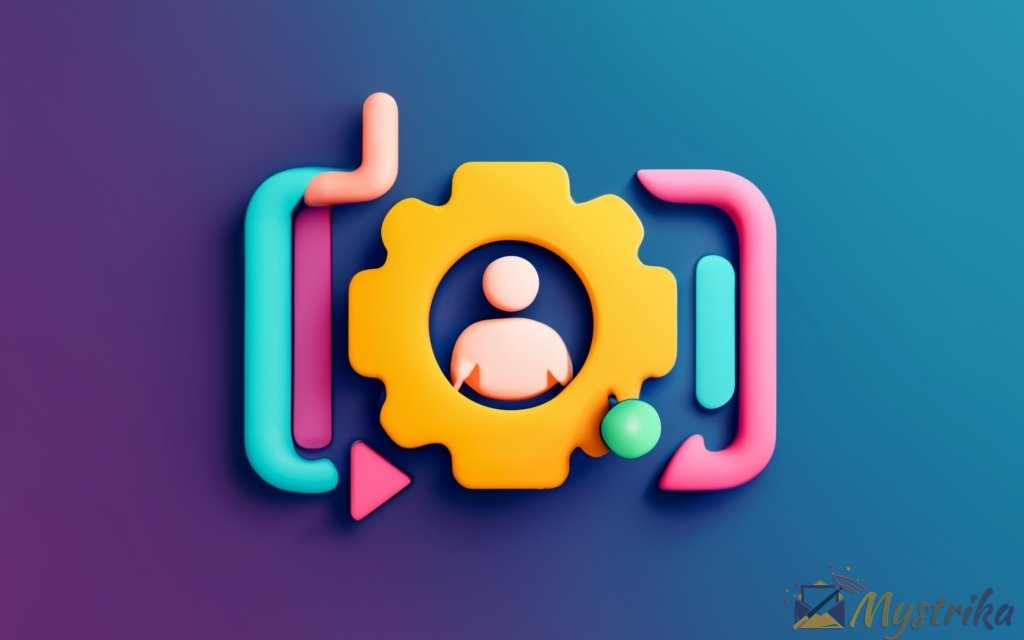Tired of lackluster lead generation? Struggling to cut through noise and connect with high-value prospects? You’re not alone. Lead gen is the #1 hurdle holding software companies back from stratospheric success.
But what if you could unlock a torrent of qualified leads into your sales funnel? Envision closing deals before competitors even land introductions. By mastering lead generation, your software business can dominate the market.
This comprehensive guide shares battle-tested lead gen strategies to engage, convert, and delight ideal prospects in 2023. Follow these proven steps to fuel exponential growth.
Understanding Your Target Audience for Software Lead Generation
The first and most critical step in generating leads for your software company is gaining a deep understanding of your target audience. Without insight into your ideal customers, your marketing efforts will seem scattershot at best, and you’ll struggle to attract quality leads.
Conducting thorough market research to identify your ideal customer profile (ICP) is the foundation for success. As legendary marketer Peter Drucker noted, “The aim of marketing is to know and understand the customer so well the product or service fits him and sells itself.”
So how do you “know and understand” your ideal prospects? Here are three key steps:
Conducting Market Research to Identify Your ICP
Your ideal customer profile consists of both demographic details (like company size and industry) as well as behavioral data (needs, challenges, motivations). Compiling this information requires rolling up your sleeves to do systematic market research.
Survey Existing Customers
Your current customers offer a wealth of insights into your ICP. Analyze characteristics like:
- Company size/industry
- Technologies used
- Roles/departments
- Business challenges
- Purchasing motivations
- Buying process and timeline
- Future needs
Send out surveys and interviews to build a profile of your best-fit accounts. Look for patterns across your customer base to identify your “dream” prospects.
Study Competitor Customers
Research companies in your space to see who they target and attract. Browse their website content, ads, and collateral. Sign up for demos and review their onboarding flows.
Reverse engineer their ideal customer profile based on their messaging and positioning. This can uncover white space opportunities for your brand.
Consult Industry Research
Marketing research firms like Gartner, Forrester, and IDC produce in-depth reports on software trends, buyer behaviors, and market sizing.
Leverage their quantified data points on factors like adoption rates, feature priorities, and spending forecasts to flesh out your ICP.
Map the Buyer’s Journey
Understand how your prospects research solutions, weigh options, and make decisions. Content consumption, influencer outreach, events attended, purchase triggers, etc. Documenting the buyer’s journey for software purchases in your niche allows you to map your lead gen strategy to each stage.
Analyzing Customer Demographics
Armed with data from your market research, you can start firming up the key customer demographics that make up your ideal profile. This should include details like:
Location: Where are your best-fit prospects based? Certain regions like Silicon Valley or New York may offer more potential. Consider time zones as well for outreach.
Company Size: Is there an ideal employee count? Small businesses under 50? Mid-market with 500+? Enterprises over 1000? Company size often dictates needs and budgets.
Industry Vertical: Is your software tailored to certain sectors like finance, healthcare, manufacturing? Vertical-specific needs impact product fit.
Technologies Used: What platforms and integrations does your software support? These technical details help qualify lead relevance.
Department: What roles use your product? Engineering? Product? Marketing? Tailor messaging to each.
Budget: Is your solution geared towards high, mid or low-budget accounts? Budget influences sales cycles and conversions.
Drilling down on these ICP demographics allows you to narrowly define your total addressable market and pinpoint where your solution resonates most.
Creating Detailed Buyer Personas
The final step is compiling your research into one or more buyer personas – semi-fictional representations of your ideal customers. Well-crafted personas help humanize your ICPs and allow you to tailor messaging precisely to their needs and motivations.
Your personas should include details like:
- Bio: Job title, department, experience, education, personal tidbits
- Goals: What business or career goals motivate them?
- Challenges: What pain points are they trying to address?
- Attributes: Technical acumen, communication style, authority
- Behavior: Where do they look for solutions? Who influences them?
Sprinkle in some representative quotes and stock photos, and your personas will serve as a North Star guiding every aspect of your lead generation, from content creation to sales conversations.
True success in lead gen stems from a diamond-sharp view of your ideal customer. Do the legwork upfront to intimately understand your target audience through market research, customer analysis, and buyer personas. With this foundation, your outbound and inbound efforts will resonate like never before. Now, go get to know your dream prospects!

Developing a Robust Lead Generation Strategy
You’ve identified your ideal customer profile. Now it’s time to develop a holistic lead generation strategy to reach them.
A robust lead gen strategy weaves together inbound and outbound tactics, digitizes your sales funnel, and applies automation to turn strangers into delighted customers.
Let’s examine the key elements for building a high-performance lead generation machine.
Outlining Goals for Your Software Lead Gen
Like any marketing initiative, lead gen efforts require clearly defined objectives to channel work and measure performance. Start by asking questions like:
- How many new leads do we want to generate each month?
- What’s our cost per lead target?
- How many marketing qualified leads (MQLs) should become sales qualified leads (SQLs)?
- What conversion rates are we aiming for through the funnel?
With quantifiable goals established, you can model sales forecasts, resource needs, and ROI. Revisit these KPIs quarterly to track progress.
Choosing the Right Lead Generation Tactics
Dozens of lead generation tactics exist today. Which ones will work best for your software business? The answer lies in your ICP’s media consumption and buying behaviors.
For example, if your prospects rely on peer reviews and analysts reports during vendor selection, activities like getting featured in analyst reports and building an advocate program should take priority.
Here are some of the most effective lead gen channels for software companies:
Inbound Tactics
- SEO optimized content
- Educational blogs and videos
- Free trials and product demos
- Webinars and virtual events
- Social media engagement
- Syndicating gated offers
Outbound Tactics
- Targeted cold email outreach
- Cold calling key accounts
- PPC and social media advertising
- Direct mail campaigns
- Sponsoring or exhibiting at live events
Take an omnichannel approach combining multiple inbound and outbound tactics tailored to your ICP.
Incorporating Inbound and Outbound Strategies
In the past, outbound techniques like cold calling dominated software lead generation. But today’s savvy B2B buyers demand an inbound-focused, educational approach.
Your lead gen strategy should incorporate both inbound and outbound tactics to maximize results.
Inbound activities like content marketing, SEO, and social media help attract and nurture high-quality leads over time.
Outbound tactics like calls, emails, and ads then help you double down on the most promising inbound leads. This balanced combo delivers the highest conversions.
Sequence your tactics over the buyer’s journey:
Top of Funnel – Attract
Focus on inbound lead gen to raise awareness and interest. Content marketing, SEO, free tools, and events work well here.
Middle of Funnel – Engage
Nurture leads by answering common questions and concerns. Send useful content that builds credibility and trust.
Bottom of Funnel – Convert
Transition to outbound tactics like cold outreach, direct mail, and ads to convert promising leads into SQLs and customers.
Planning Lead Nurturing and Scoring Frameworks
Attracting new leads is only the first step. Develop frameworks to nurture and qualify inbound leads over time.
With lead nurturing, you build relationships by providing value at each stage of the buyer’s journey. Send targeted content that helps prospects learn and make informed decisions.
Lead scoring assigns points to leads based on attributes like demographics, interests, and actions. Use this intel to focus sales efforts on hot prospects most likely to convert.
Say a lead working at a Fortune 500 bank downloads your guide on analytics and compliance. They also viewed a pricing page and watched a product demo.
Based on these positive signals, this lead would receive a high score, indicating stronger sales potential.
In short
An effective lead generation strategy requires:
- Clear goals reflecting revenue targets
- Omnichannel tactics tailored to your ICP
- Orchestrating inbound and outbound activities
- Automated lead nurturing and scoring
With these core elements in place, your sales and marketing teams can work synergistically to turn cold prospects into delighted customers.
Now, go forth and generate! With a stellar lead gen strategy, your software company will smash growth goals and reach new heights.

Implementing Effective Inbound Lead Generation Tactics
Inbound marketing is the hottest buzzword in B2B lead generation today. Rather than interrupting buyers, inbound focuses on attracting them organically by creating content and experiences tailored to their needs.
For software companies, inbound lead gen strategies like content marketing, SEO, and social engagement offer a scalable way to generate and nurture high-intent leads over time.
Let’s explore some of the topinbound tactics to fuel your software sales funnel:
Content Marketing
Content marketing involves creating and promoting valuable, relevant content like blog posts, videos, and guides to attract and engage your ideal prospects.
But it’s not just about churning out content. The emphasis should be on building relationships with potential buyers through useful educational content across their buyer’s journey.
Here are some of the most effective types of content for software lead gen:
Blog Posts: Publish educational articles, how-tos, tips, and trend analysis regularly. Aim for comprehensive 500+ word posts optimized for SEO.
Ebooks / Guides: Offer meatier lead magnets like 50-page guides covering topics prospects care about. Gate these with lead forms for downloads.
Case Studies: Showcase client success stories and ROI achieved. These build trust and social proof.
Videos: Create short explainer and tutorial videos to showcase your software visually. Host on YouTube and embed in posts.
Webinars: Host educational webinars to present your thought leadership. Include a lead gen CTA.
Infographics: Visuals attract attention. Design creative infographics to illustrate trends, data, and concepts.
Tools / Calculators: Interactive tools positioned as “free resources” can generate many leads. Build them on your site or Linktree.
No matter the content format, the focus should always be on delivering value and solving your audience’s problems, not promoting your brand. Use content to establish expertise.
SEO Optimization
Your website is the hub of inbound lead generation, so optimizing it for SEO is critical. The goal is to rank highly in search for keywords your prospects are searching for during their research process.
Tactics like keyword research, metadata optimization, link building, site speed improvements, and content creation all boost your rankings.
Other lead gen enhancements include:
- CTA placements: Add clear calls-to-action in content to convert visitors. Email signup forms, content offers, contact forms, live chat, etc.
- Lead magnets: Gate valuable content behind lead forms to capture visitor info. Ebooks, kits, templates, and webinars work well.
- Site search optimization: Improve on-site search relevance to help visitors quickly find answers. This reduces bounce rates.
- Micro-conversions: Add micro-conversions like PDF downloads, comments, tags, shares and page-level form fills to capture more leads.
Done right, SEO can become a perpetual lead generation engine running 24/7.
Webinars & Events
Webinars and virtual events allow your brand to connect directly with prospects liveonline. They offer an interactive forum to engage audiences through Q&As, demos, discussions, and valuable education.
Types of webinars and virtual events that generate software leads include:
- Educational webinars: Share industry insights and best practices with value-focused agendas.
- Product demos: Walkthroughs of product functionality and UX personalized for the attendees.
- Ask me anything (AMA) sessions: Open Q&A format allows organic discovery of buyer needs.
- Expert panels: Assemble subject matter experts and influencers for thoughtful discussion.
- Hackathons / workshops: Immersive learning and hands-on training opportunities.
Other lead gen tips for webinars and virtual events:
- Promote extensively through email, social media, affiliates/partners.
- Offer exclusive invite-only sessions for hot inbound leads to provide VIP access.
- Keep presentations concise and interactive. Shorter events have higher attendance.
- Record/repurpose content into blogs, snippets for social promotion after.
Social Media Marketing
While social platforms like LinkedIn, Twitter and Facebook seem saturated today, their targeting capabilities still offer fertile lead gen ground for B2B brands.
Tactics like paid ads, organic content sharing, employee advocacy, influencer marketing and lead gen cards/forms help drive inbound traffic and conversions.
As the social network for professionals, LinkedIn offers numerous options for software lead gen, including:
- Sharing educational content in Groups related to your ICPs
- Running LinkedIn lead gen forms and Message Ads
- Building relationships with prospects by engaging on their posts
- Partnering with influencers and industry experts to expand reach
- Asking current customers for referrals and recommendations
- Joining discussions in vertical communities relevant to your solution
While smaller than LinkedIn, Twitter offers ways to connect with prospects in your space:
- Live tweeting / recapping from industry conferences and events
- Quote tweeting and commenting on relevant conversations in your community
- Running Twitter lead gen cards to gate content
- Monitoring keyword and hashtag discussions for opportunities to add value
Depending on your ICPs’ social media behaviors, Facebook may provide inbound potential via:
- Targeted lead gen ads to personalized demographics
- Participating in industry-specific groups and discussions
- Sharing educational content to build thought leadership
A blended social strategy helps nurture prospects across multiple platforms where they’re most active online.
Creating Compelling Content for Inbound Leads
We’ve covered the what – different types of inbound content. Now let’s tackle the how.
Crafting compelling content comes down to really understanding your audience and their buyer journey pain points. Map content topics and formats to each stage.
Here are some tips for creating irresistible lead gen content:
Educational Blog Posts & Videos
- Address common questions prospects ask at each stage of their research
- Provide step-by-step walkthroughs for complex processes
- Analyze trends happening in your space
- Compare/contrast different solutions to your own (be objective)
- Explain technical concepts clearly even for beginners
Ebooks, Whitepapers & Guides
- Offer actionable takeaways – tips, frameworks, models, cheat sheets
- Include expert perspectives from researchers, analysts, influencers
- Leverage data, stats and visuals to reinforce points
- Structure content using headers, short paragraphs, bullet points for skimming
- Promote lead magnets extensively through ads, emails, social media
Interactive Tools, Quizzes & Assessments
- Pique curiosity with titles like “What Type of [X] Are You?”
- Offer personalized insights and recommendations based on responses
- Gate with a lead gen form to access the results
- Let users easily share results on social to virally acquire leads
Infographics, Charts & Visual Content
- Distill complex ideas into easily digestible graphics and visuals
- Leverage visual metaphors and analogies to explain technical topics
- Use bold colors, icons, illustration styles tailored to your brand
- Include facts, stats, data that prospects can cite and share
- Produce different formats for different uses – static PNGs, interactive Visme
Inbound lead generation is all about creating value. Put your audience’s needs first, understand their pain points, and address them with helpful educational experiences. Do this consistently across channels, and you’ll attract a steady stream of hot new leads into your funnel.

Executing Successful Outbound Lead Generation Techniques
While inbound marketing builds relationships over time, outbound lead generation takes a more direct approach to connecting with potential buyers.
Outbound tactics like cold outreach, advertising, and direct mail allow you to target and engage high-value prospects at scale to fill your sales pipeline.
Let’s explore some of the top outbound lead gen strategies for software companies:
Cold Email Outreach
Cold email remains one of the most effective B2B lead gen tactics if executed correctly. The key is personalizing messages to prospects based on their needs.
Steps for optimizing cold emails:
1. Research and compile targeted lists
Leverage tools like ZoomInfo or LinkedIn Sales Navigator to build lists based on filters like job title, industry, company size/revenue, technologies used, etc.
Prioritize accounts that look similar to your current customers (ideal customer profile).
2. Personalize every cold email
Generic batch-and-blast emails are doomed to fail. Personalize every cold email to resonate with that specific prospect.
Reference their role, company, social posts, recent news, interests, and anything that makes your message unique.
This shows you’ve done your research on them and gets far better open and response rates.
3. Write compelling subject lines
With inboxes flooded, you have 2-3 seconds to capture attention. Subject lines are critical.
Some proven formulas:
- “Quick question on [relevant topic]”
- “Thoughts on [recent industry news]?”
- “[Industry data stat] – What it means for [prospect’s company]”
- “Your take on [concept related to their work]?”
Subject lines that provoke curiosity or demonstrate relevance get opened.
4. Automate sequences & follow-ups
Don’t just blast one-off emails. Create sequenced nurture campaigns that build rapport over multiple touches.
Follow up promptly when prospects reply. Quick responses build trust and credibility.
CRM and sales automation tools streamline managing outbound messaging at scale.
Cold Calling
Cold calling has a lot in common with cold emailing. The keys are personalization, relevance, and persistence.
Tips for optimizing cold calls:
- Personalize your pitch based on what matters to that prospect and company.
- Conduct research beforehand so you sound knowledgeable about their needs.
- Offer value upfront by introducing yourself as a subject matter expert.
- Keep calls short and focused. Get right to the core value prop and reason for calling.
- Persist with appropriate frequency if you don’t connect on the first try.
- Leverage tools like auto-dialers and crm call logging to scale efficiently.
Many people fear cold calling, but it remains a high-converting lead gen tactic when done right.
Pay-Per-Click Advertising
PPC ads placed on search engines like Google and Bing allow precise targeting of prospects actively searching for solutions.
With PPC, you can:
- Target specific keywords prospects search for like “workflow automation software”
- Show ads geographically to only desired countries, cities, or regions
- Adjust bids to optimize cost per conversion
- Create ad variations to test messaging
- Drive traffic to optimized landing pages designed specifically for conversions vs. your homepage
- Remarket to visitors who previously hit your site to re-engage them
Advanced tactics like dayparting, device targeting, demographic targeting, and more allow you to micro-target your ideal customers.
LinkedIn Lead Gen Ads
Sponsored LinkedIn ads let you get your message front and center in front of your ideal prospects as they scroll their feeds.
But simple Brand Awareness and Traffic driving objectives won’t generate leads directly.
For that, use LinkedIn’s Lead Gen Form Ads.
These allow prospects to fill out a lead capture form directly within the ad unit – streamlining conversions.
Benefits of LinkedIn Lead Gen Ads:
- Ad units capture prospect contact details and custom fields for lead scoring
- Highly targeted to job role, industry, company, interests, etc.
- High visibility with prominent placement in feeds
- Prospects convert without even clicking to your site
Use Lead Gen Form Ads to capture inbound leads, then nurture them with your content.
Direct Mail Campaigns
In our digital age, a personalized piece of physical mail can stand out. Leverage direct mail to outbound targets.
Examples of effective direct mail offers include:
- Product samples – Send a functional demo or trial kit they can experience
- discount codes – Mail a coupon/promo for money off to incentivize a purchase
- Version updates – Share what’s new in your latest software release
- Event invites – Mail VIP passes to an exclusive party/experience
- Thought leadership content – Printed books, guides, reports establish expertise
To make direct mail scalable:
- Integrate printing/fulfillment services like MailMerge, Lob, or Printfection
- Personalize elements like name, company, location, and message
- Make the CTA and next step clear like visiting a landing page
- Automate campaigns based on lead interactions and scoring
Direct mail reinforces your brand and messaging across channels.
In nutshell
Outbound lead generation brings qualified prospects into your funnel by targeted, one-to-one messaging.
Orchestrate tactics like:
- Personalized cold emails & calls
- PPC ads focused on high-intent keywords
- LinkedIn Lead Gen Form Ads matched to your ICP
- Direct mail offers driving to landing pages
Then double down by nurturing inbound leads identified through outbound efforts. This inside-outside approach converts strangers into delighted customers.

Scoring and Qualifying Inbound Leads
You’ve attracted leads through your inbound efforts. But not all leads are created equal. To ensure sales effectiveness, you need to qualify and prioritize the hottest prospects.
This is where lead scoring comes in – assigning points to leads based on their profile, interests, and engagement to focus sales efforts on those most likely to convert.
Let’s examine how to create a lead scoring framework for your software business.
Using Lead Scoring to Assess Inbound Lead Quality
The goal of lead scoring is to gauge both fit and buyer readiness by attaching a numeric score to each lead. This allows you to identify and double down on promising leads while deprioritizing unqualified leads.
Benefits of lead scoring include:
Increased sales productivity – Sales can focus on qualified prospects instead of wasting time with cold leads.
Faster conversions – Higher scores signal sales readiness so deals progress quicker.
Improved forecasting – Scores represent the sales potential of each lead, informing projections.
Optimized nurturing – Scores determine which leads receive more/less nurturing.
Enhanced targeting – High-scoring segments can be targeted across channels.
With these benefits in mind, let’s see how to build an effective scoring model.
Scoring Leads Based on Profile, Interests and Actions
There are two components to lead scoring – attributes and activities.
Attribute scoring looks at lead profile details like:
- Company (size, industry, tech stack)
- Demographics (title, department, seniority)
- Firmographics (revenue, employees, locations)
Leads that closely match your ideal customer profile get higher attribute scores.
Activity scoring assigns points for prospect engagement like:
- Email opens/clicks
- Content downloads
- Site page visits
- Event signups
- Form fills
- Free trial signups
Leads demonstrating more interest through actions get higher activity scores.
By blending attribute and activity signals, you create a holistic lead score. Typically attributes are static while activity fluctuates over time.
Setting a Threshold Score to Identify MQLs
Once you’ve scored leads, establish a threshold to define a marketing qualified lead (MQL).
Leads that surpass this threshold are considered sales-ready. Common ranges:
- Conservative Threshold: 75+
- Moderate Threshold: 60+
- Aggressive Threshold: 50+
The threshold aligned to your sales cycle velocity and resource capacity.
You can also categorize leads in tiers based on scores:
- Tier 1 (75-100) – Hot lead ready for outreach
- Tier 2 (50-75) – Warm lead for added nurturing
- Tier 3 (1-50) – Cold lead requiring heavy nurturing
Track threshold attainment as a KPI and tweak as needed.
Focusing Sales Efforts on Qualified Leads
Now that you have a scoring model in place, put it into action:
Pass top-tier leads to sales
Provide tier 1 leads over the MQL threshold to your sales development reps for prompt outreach. Sales should focus inbounds first since they expressed interest.
Enhance nurturing for mid-tier leads
Look at what content tier 2 leads are engaging with and send more of that to continue building the relationship. Avoid over-nurturing.
Evaluate strategy for low-tier leads
Assess if your inbound tactics are attracting enough quality leads. If tier 3 leads dominate, refine your targeting and content.
Update sales playbooks
Train reps to ask for a lead’s score and customize their approach accordingly. Highly scored leads warrant white glove service.
Adapt account-based strategies
Look for patterns in lead scores from target accounts. Does the parent company score highly but satellite offices lag? Adjust targeting.
Monitor scores over time
Lead scores change dynamically based on engagement and activity. Review regularly for opportunities to improve conversion rates.
In short
With a data-driven lead scoring framework in place, your sales and marketing teams can work in harmonious precision to nurture the right leads at the right time for pipeline growth and revenue acceleration.
Now stop wasting effort on unqualified leads and go focus your energy on those high scorers to turn inbound interest into delighted customers!

Measuring and Optimizing Lead Generation Efforts
You’ve built a blended lead generation strategy. Now it’s time to analyze performance and optimize the machine for maximum results.
Proper measurement and testing allow you to double down on what’s working and course correct tactics that miss the mark.
Let’s explore key metrics to track and ways to upgrade your lead gen performance.
Tracking Critical Lead Gen KPIs
First, determine the key performance indicators (KPIs) that indicate the health and ROI of your programs. Critical metrics include:
Volume: Total number of new leads generated per campaign, channel, timeframe
Cost: Total expenses per lead source – ad spend, salaries, overhead, tools
Conversion rate: Percentage of prospects converted into MQLs and sales opportunities
Sales velocity: Time from lead to closed deal; total deal size; expansion revenue
Cost per lead: Division of total cost by volume to measure efficiency
MQL to SQL rate: Percentage of marketing qualified leads that turn into sales qualified opportunities
Sales win rate: Percentage of sales qualified opps that turn into won deals
Customer lifetime value: Total profit generated from a customer relationship
Analyze metrics by source, asset, ad creative, offer, campaign, etc. to connect activity to outcomes. Look for positive trends as well as underperformers.
Analyzing Lead Quality and Channel Effectiveness
Look beyond vanity metrics to evaluate lead quality and channel ROI:
Review lead scoring data – Are overall lead quality scores improving? Which activities generate higher scoring leads?
Analyze sales feedback – Which inbound channels provide leads sales categorizes as “hot”?
Assess deal size by source – Do certain channels or campaigns produce bigger deals?
Study sales cycle length – Do leads from a certain source convert faster than other channels?
Calculate true CPL – For ad sources, factor in conversion rates to determine true cost per customer, not just cost per impression/click.
Segment by persona – Does your ICP respond better to different channels?
This advanced analysis ensures you optimize the right channels and tactics.
Monitoring the ROI of Lead Gen Programs
Marketing is under constant pressure to prove the ROI of lead generation. Here are tips:
Document revenue impact – Directly correlate leads from campaigns to closed deals in your CRM.
Review cost per customer acquisition – Compare program costs to the profit from customers sourced through that program.
Study churn rates of inbound leads – Are they higher or lower than other lead sources?
Calculate customer lifetime value – Factor in repeat business, upsells, referrals, and expansion revenue.
Model acceleration driven – If a program generates more pipeline that sales can close faster, factor in the velocity boost.
Capture cost savings – Quantify waste reduction from better qualified leads.
Conveying multi-dimensional ROI beyond superficial metrics demonstrates marketing’s revenue impact.
Improving Underperforming Aspects of Lead Gen
Once you pinpoint laggards, roll up your sleeves to reinvigorate tactics:
Refresh outdated content – Update old blog posts and guides with new data, trends, and perspectives.
Overhaul poor performing landing pages – Review heatmaps and recordings to improve layouts, copy, and CTAs.
Revamp obsolete nurture tracks – Realign to shifting buyer journeys and pain points.
Refine ineffective SEM and campaigns – Tweak targeting, bidding, messaging, and creatives until metrics improve.
Reconfigure forms and offers – Try new locations, formats, and incentives until offer match improves.
Rethink painful processes – Identify and fix bottlenecks slowing down lead handoffs, follow-ups, and nurturing.
Revisit training – Reskill teams on best practices for content creation, multichannel follow-up, and lead qualification.
Reallocate resources – Shift budget and talent to channels and campaigns gaining traction.
Leverage data, not gut feel, to elevate the performance of your lead gen engine.
In nutshell
Sustainable lead generation requires analyzing performance, uncovering insights, and optimizing constantly.
By tracking metrics like pipeline velocity and cost per customer, you gauge strategy effectiveness.
Diagnosing poor performing components allows you to validate what works – and rapidly fix what doesn’t.
Following the data and applying continual optimization will keep your inbound, outbound, and multi-channel lead generation firing on all cylinders.

Technology and Tools to Enhance Software Lead Gen
Software has made generating leads for software companies…well, easier!
Leveraging technology & tools at each stage of your strategy supercharges productivity and ROI.
Let’s explore some of the top platforms and solutions to amplify your software lead generation and sales efforts.
CRMs and Marketing Automation Platforms
A CRM or MAP serves as the core system of record for your lead generation tech stack. It tracks prospects from lead through customer.
Popular CRMs like Salesforce and HubSpot provide visibility into the entire pipeline and offer other lead gen features like:
Contact management – Central database to store all prospect and customer information with tracking and reminders for follow-ups.
Lead scoring – Automatically assign lead grade based on activity, profile, and engagement data.
Lead routing – Assign leads to sales reps using round-robin, territories, and other rules.
List management – Upload and segment contact lists for targeted email and ad campaigns.
Email integration – Connect email marketing platforms to track campaign performance.
Lifecycle workflows – Automate multi-touch nurture campaigns based on lead attributes.
Landing pages – Build gated landing pages and forms to capture prospect data.
Reporting – Customizable reports and dashboards to analyze lead and revenue metrics.
AI Capabilities – Predictive lead scoring, intelligent data capture, and more.
A CRM centralizes prospect data and systems to streamline execution.
Email Marketing Tools
Email remains a cornerstone of lead generation. Solutions like Mailchimp and Outreach optimize delivery and campaign performance.
Key features include:
List building – Upload contacts, integrate with your CRM, and expand your database.
Segmentation – Tag and group contacts based on attributes to target campaigns.
Template library – Professionally designed, branded email templates to choose from.
Drag-and-drop editor – Build and customize mobile-optimized emails visually.
Personalization – Insert merge tags to individualize emails at scale.
Delivery optimization – Ensure your emails reach the inbox through warm-up tools.
Automation – Schedule and trigger emails based on dates, lead activity, and more.
Email analytics – Track opens, clicks, unsubscribes, and more to optimize campaigns.
Integrations – Connect seamlessly with your CRM, calendar, and other martech.
Email tools streamline creating, sending, and optimizing campaigns.
Lead Capture and Analytics Tools
Solutions like Leadfeeder reveal who’s visiting your site and analytics on their engagement so you can capture more leads.
Key capabilities include:
Visitor identification – Recognize companies visiting any site page based on IP address.
Lead alerts – Get notifications when target accounts land on your site.
Engagement tracking – See what pages prospects viewed, content downloaded, videos watched.
Lead prioritization – Scoring and grade assignment based on visit metrics.
List building – Export contact lists of segmented visitors for outreach.
Decision maker identification – Identify the best contacts at each company.
Technographic filtering – Segment visitors by technologies used, industry, location.
Retargeting – Pass identified leads to ad platforms to remarket.
Visitor analytics transforms unknown traffic into tracked leads for follow up.
SEO and Content Creation Tools
Optimizing content and pages for search helps inbound lead generation by increasing discoverability and organic traffic.
SEO tools like Moz, SEMrush, and Ahrefs provide:
Keyword research – Identify highest potential search terms and trends.
Backlink analysis – See who links to your site and assess authority.
Site audits – Crawl site to catch technical issues hurting performance.
Rank tracking – Monitor keyword rankings in search engines.
Competitive research – Benchmark your site against competitors.
Reporting – Custom reports on metrics like rank changes and traffic value.
Content creation tools like Grammarly, Hemingway, and Canva assist with:
Writing enhancement – Fix grammar, tone, conciseness, readability.
Graphic design – Easily create visual assets like social graphics, infographics, and images.
Collaboration – Review content and leave feedback for writers.
SEO optimization – Ensure assets use target keywords, meta descriptions, alt text.
Productivity – AI writing assistance, content templates, and workflow.
The Role of AI in Software Lead Generation
AI and machine learning offer capabilities that can transform lead generation:
Data entry automation – Systems like Dooly autofill CRM data based on interactions to eliminate manual busywork. AI parses details from emails, calendar meetings, call recordings to create new contacts/leads or append existing records. This saves sales teams hours of manual data entry time each week.
Predictive lead scoring – Rather than just looking at past behavior, predictive scoring uses ML to forecast which prospects will likely convert even if they lack engagement history. This reduces missed opportunities.
Content personalization – Using generative AI like ChatGPT, marketers can instantly customize content like emails, landing pages, and ads to resonate with individual prospects. The possibilities are endless.
Conversational marketing – Whether via chatbots or voice assistants, AI-driven conversational systems can engage, qualify, and nurture prospects 24/7.
Attribution modeling – Determine the true impact each touchpoint has on conversions, even months later. Then optimize spending.
Hyper-targeting – AI crunches billions of data signals to precisely target prospects with messaging that resonates.
Customer prediction – Identify lookalike prospects that resemble existing customers based on thousands of attributes.
The applications of artificial intelligence in lead generation are exploding. Now is the time to strategically incorporate AI to unleash your software sales growth.
In short
Leveraging the right martech creates force multiplier effects on your lead generation productivity, scale, and performance.
Core platforms like CRMs centralize prospect data to enable optimization.
Email, analytics, and content tools remove friction executing campaigns.
And emerging AI unlocks next-level personalization, prediction, and automation.
Now integrate the tech and get ready for your best sales year ever!

Key Takeaways and Next Steps
We’ve covered a ton of ground exploring proven lead generation strategies and tactics for software companies.
Let’s recap the key lessons to retain:
Key Takeaways
Know your ideal customer – Invest time upfront fully understanding your best-fit prospects through market research. Create buyer personas.
Map tactics to the buyer’s journey – Attract strangers, convert leads into SALs, and delight customers by tailoring strategies to each stage.
Blend inbound and outbound – Combine inbound content, SEO, and social with outbound email, calls, and ads for an omnichannel approach.
Make sales and marketing BFFs – Align teams on lead definitions, handoffs, and SLAs to avoid wasted efforts and friction.
Produce remarkable content – Create educational resources that engage and nurture prospects over time.
Leverage technology – Integrate tools like CRMs, email, and analytics to amplify productivity.
Test and optimize relentlessly – Use data-driven insights to double down on what converts and fix underperformers.
Don’t go it alone – Consider partnering with specialized agencies to incorporate new skills and capacity.
Patience pays off – Lead gen is a long game. Stay persistent through ups and downs.
With a holistic lead gen strategy crafted for your unique business, success awaits.
Next Steps
Ready to supercharge your software lead generation? Here’s a roadmap:
Set revenue goals – Define specific lead volume, sales velocity, and revenue targets you want to hit.
Audit existing strategies – Review current channels and campaigns. What’s working well? Where’s opportunity?
Map content topics – Brainstorm educational content that attracts and engages your ICPs.
Assess resources – Do you have the expertise, headcount, and budget required in-house? If not, consider outsourcing.
Document processes – Codify standards across teams – from lead definition to handoff to sales acceptance.
Select technology – Vet lead gen software needed to support execution at scale.
Train teams – Reskill staff on new strategies and tools through workshops and job aids.
Run an A/B test – Before going all-in, pilot new strategies and measure impact.
Review metrics – Establish reports and dashboards to monitor lead gen KPIs and quickly course-correct.
Celebrate wins – Keep teams motivated tracking big deal wins sourced from lead gen programs.
With the insights in this guide, you’re now equipped to transform your software company into a lead generation machine.
We’ve given you the fishing pole – now go reel in some marlin-sized deals! Wishing you massive success.
Summary
Here are the core lessons to help master lead generation:
- Conduct in-depth market research to intimately understand your ideal customer profile. Create buyer personas to humanize them.
- Develop a blended inbound and outbound strategy mapped to each stage of the buyer’s journey – from attracting strangers to delighting customers.
- Produce remarkable educational content across formats that engages and nurtures prospects over time.
- Leverage technology like CRMs, email, analytics, and AI to enhance productivity and scale.
- Build robust frameworks for lead qualification, scoring, and sales handoff to avoid wasting efforts on unqualified leads.
- Continuously track KPIs like cost per lead, sales velocity, and conversion rates. Optimize programs based on hard data vs opinions.
- Take an omnichannel approach combining cold calling, emails, social media, events, SEM, direct mail, and more.
- Align sales and marketing under shared lead definitions, processes, metrics, and SLAs to maximize efforts.
- Test new strategies through A/B experiments before committing fully. Validate what actually works.
- Persist through ups and downs. Lead generation is a marathon, not a sprint.
With these lessons in mind, you now have an actionable blueprint for lead gen excellence. Master these strategies, and your software business will thrive for years to come.
Frequently Asked Questions
What are the most effective lead generation strategies for software companies?
A combination of inbound tactics like content marketing, SEO, and webinars along with outbound tactics like cold emailing, PPC ads, and direct mail tends to work best. Aligning efforts to each stage of the buyer’s journey is key.
How can I create an ideal customer profile to focus my lead gen efforts?
Conduct thorough market research surveying existing customers, analyzing competitors, and consulting industry reports. Compile findings into a hypothetical prospect with details on demographics, challenges, motivations, and behaviors.
What tools can help with managing leads?
A CRM like Salesforce or marketing automation platform like HubSpot can track prospect data from lead through customer. Email tools like Mailchimp facilitate campaigns. Visitor analytics solutions like Leadfeeder identify anonymous traffic.
How do I know which leads to prioritize for sales follow-up?
Lead scoring models grade inbound leads based on attributes like company details and behaviors like form fills. Set a threshold score for a marketing qualified lead ready for sales outreach.
How do I demonstrate ROI from my lead generation programs?
Track quantified metrics like cost per lead, sales cycle acceleration, deal size by source, and customer lifetime value. Report on multi-dimensional factors beyond superficial vanity metrics.
How can I improve deliverability of cold emails?
Research targeted prospects, personalize messaging, write compelling subject lines, and automate sequencing/follow-ups. Utilize email tools to optimize deliverability through warming and sender reputation management.
How do I generate more inbound leads organically?
Focus on high-quality educational content marketing. Optimize pages for SEO through metadata, schema markup, link building, page speed, etc. Promote gated offers on social media.
How can I scale lead follow-up effectively?
CRM automation streamlines tasks like email sequences, call logging, lead routing, and data capture. AI can autofill records, offer next-step suggestions, and enhance productivity.

